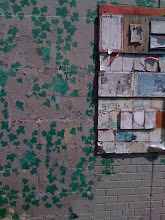
A lot goes into a fashion spread. Designers dream up clothes, which are then sewn by a team of nimble seamstresses. Art directors concoct fantastical concepts, like the Alice in Wonderland themed editorial created for Vogue in December 2003. Stylists then craft enviable ensembles from a massive closet full of covetable clothes. Glamorously gangly models perfect the hunch-and-pout, splaying their lanky limbs at sharp angles, while teams of hair and make-up gurus are on hand to perform touch-ups and transform the model from ordinary to otherworldly. All this chaos rages behind the scenes, but it all boils down to one thing: the final image. Ultimately, it’s what the photographer frames and shoots that makes it into the magazine, and timeless fashion photographs are more than the sum of their parts.
The work of photographer Irving Penn is a case in point. Penn, who died on October 7 at age 92, left behind a legacy of stunning photographs that blur the line between still-life, portraiture, and documentary photography, all while emphasizing the elegant construction of well-made clothes.
Penn studied painting at the Philadelphia Museum School of Industrial Art before arriving at Vogue in 1943, where he worked under art director Alexander Liberman. When Penn grew disenchanted by the images photographers submitted, Liberman suggested that he take his own. Despite his distaste for the fashion industry, Penn did just that, and with the aplomb that solidified his position as one of the preeminent fashion photographers of the 20th century.
Penn’s first Vogue cover, shot for the October 1943 issue, featured a sumptuous leather satchel and gloves surrounded by textiles and a large print of lemons and oranges on a wood table introducing readers to the his unique use of still-life in fashion photography. Because it lacked the superfluous, decorative adornments so frequently seen in fashion magazines, Penn’s austere cover seemed meticulous and even shockingly clinical. This famous first photograph also reveals Penn’s early education as a painter, playing with depth and scale in a way that references Cubist collage.
When he returned to the magazine after two years of volunteering for the war effort with the American Field Service, Penn turned his attention to portraiture. The photographer snapped images of nearly all of the celebrities of the day, from music greats like Louis Armstrong to literati such as Truman Capote. Penn photographed his subjects in what was affectionately referred to as “Penn’s Corner,” a set of two gray, converging walls; a scene that was bare, save for a textured carpet, wooden chair, or footstool. This monochromatic background, however, allowed the sitters’ faces to take center stage.
Penn seamlessly applied the same strategy to his fashion photography. In 1950, Penn documented the fall couture collections in Paris with a pared-down approach that emphasized the clothes’ craftsmanship and detailing. Penn shot the outfits against a matte gray curtain in his studio, and the juxtaposition of this flat fabric with the heavy, woven textiles and rich fabrics of the garments resulted in a precise, nearly architectural presentation.
Though they appear carefullycrafted, many of Penn’s most famous images are testaments to the power of serendipity. His lovely 1949 photo of model Jean Patchett sitting at a table, dazedly sucking on her necklace and kicking off her shoes, was a candid moment captured on film. For Penn, patience was paramount: After a week with Patchett on location in Peru, the photographer had still not snapped a single photograph—this iconic image was the first photograph of the trip. Penn said it best in the Vogue Book of Fashion Photography: “I was a young man with no knowledge of style, but I knew when an image had guts.” His oeuvre is reassurance that one just needs conviction, not elaborate circumstances, to create great art with serious gusto.
(Photo credit: Irving Penn, 1949)

No comments:
Post a Comment